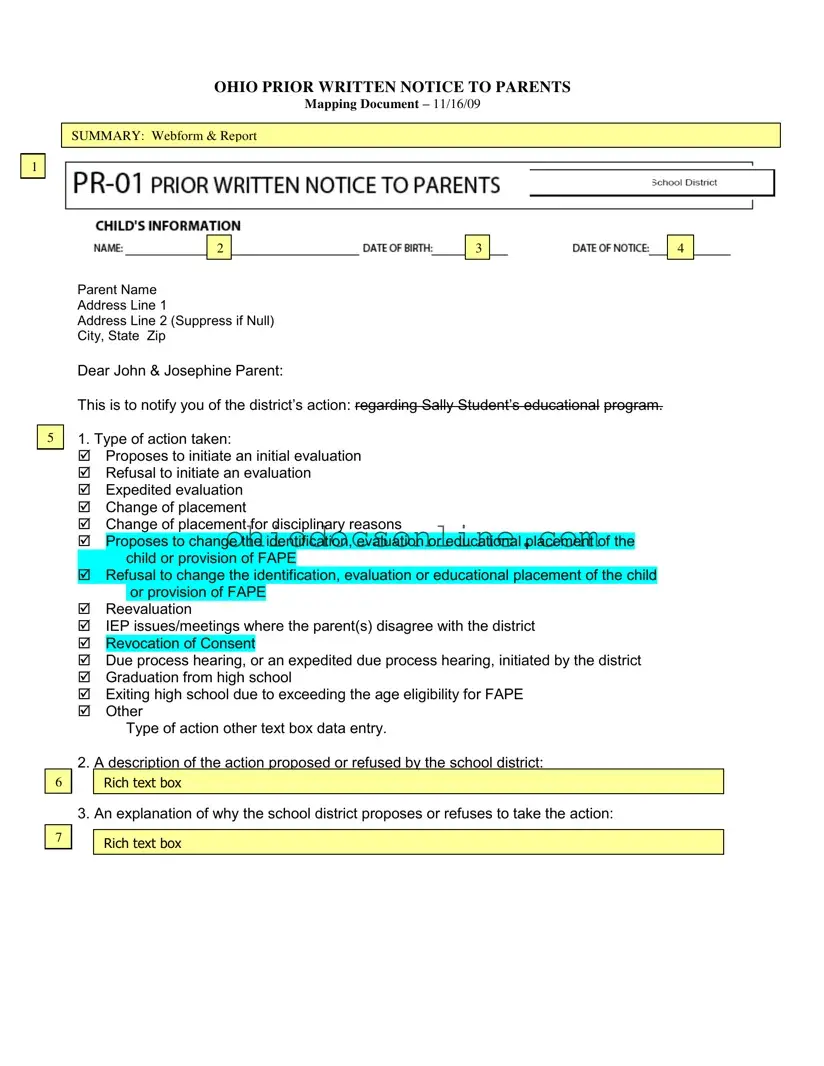Prior Written Notice Ohio Template in PDF
The Prior Written Notice Ohio form is a document used by school districts to inform parents about proposed or refused actions regarding their child's educational program. This form outlines important details such as the type of action taken, reasons for the decision, and procedural safeguards available to parents. Understanding this form is crucial for parents to navigate their rights and options in the special education process.
Open Editor
